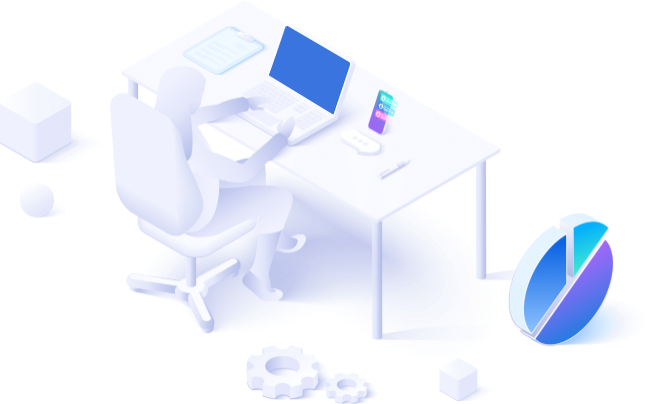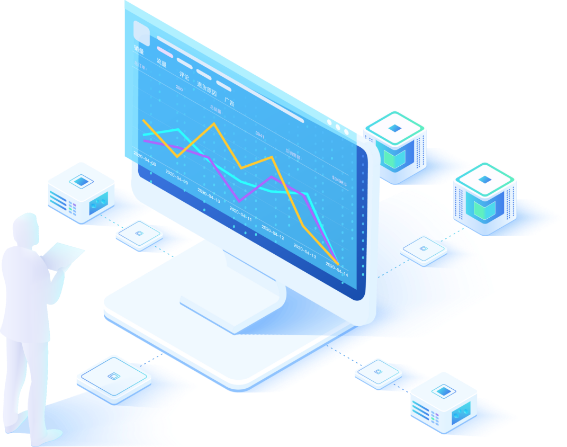Industry Solutions


In recent years, the operating environment of China's financial industry has undergone tremendous changes. Financial systems, management concepts, business models, and management methods have undergone profound changes. Modern scientific technologies have become the main driving force and support for financial transformation. The financial industry has become a beneficiary of information technology and network technology development. The construction of financial industry network systems has improved the level of financial business processing, improved the financial industry's operating environment, enhanced the reliability of financial information, and promoted the development of various new businesses.
Financial technology brings about innovative business models in the banking industry. The development of financial digitization drives the rapid growth of data. Customer behavior and business operation data can become high-value intangible assets. By developing and utilizing mobile internet, cloud computing, big data, and artificial intelligence, it opens up vast spaces for improving operational efficiency and service levels, thereby gaining advantages in fierce market competition.
Faced with exploding businesses, ensuring financial data security, meeting regulatory requirements, ensuring business continuity, and avoiding losses caused by application system failures have become enormous challenges for the financial industry. Ensuring high availability of business systems is one of the key factors in ensuring the stability of financial businesses.
Since entering the mobile internet era, the number of mobile terminal users and transaction frequencies have significantly increased. Customers are able to inquire about and process bank business transactions anytime and anywhere. Mobile payment and internet payment are more widespread and convenient. More third-party systems are accessing to the bank, which are driving forces for rapid growth in financial business. In addition, big data and artificial intelligence are widely used in risk control, marketing assistance, quantitative investment, robo-advising, risk identification and other fields. These not only provide strong support for digital finance but also cause data explosions.
Numerous third-party payment systems not only bring huge amounts of business to banks but also put a lot of pressure on bank systems. For example, during trading peaks such as "Singles' Day", it is not only the e-commerce platforms but also the processing capabilities of bank core systems that are put to the test because the final correctness of transactions relies on bank systems to ensure accuracy. There are increasingly stringent requirements for business continuity.
Banks have extremely strict requirements for the operational continuity of important business systems. For example, if a large commercial bank experiences a system outage for more than half an hour, the indirect losses in terms of business losses and reputation can reach hundreds of millions of yuan, and this figure is increasing at a rapid rate each year.


The application delivery (load balancing) technology has been widely used in the banking industry to effectively improve system performance and flexibility without requiring too much additional investment in equipment. With long-term use, maintenance personnel have fully mastered the technical characteristics and integrated them with the existing maintenance system, such as responsibility division and cross-professional cooperation.
The SuperAD series can use NAT to hide the actual information of the bank's background servers, reducing the impact of server migration and integration when building a new data center. Using domain names to provide services to the outside can also reduce the impact of server migration and IP modification. Utilizing load balancing technology as a solution for multi-center and multi-live deployment can effectively protect investment and achieve business sustainability.
Based on the best practices of application delivery, the application delivery solution includes functions such as application acceleration and centralized management to meet the business development needs of the banking industry in a three-dimensional manner while achieving multi-center application and multiple live deployment. After deploying Hongji Technology's application delivery solution, subsequent business expansion and function addition can be smoothly expanded: when it is necessary to increase the function of Hongji Technology's equipment, only the license needs to be increased without the need for hardware adjustment; the device performance can be expanded without any changes to the entire architecture and equipment configuration.
SuperAD provides a GSLB+LLB+SLB (global load balancing + link load balancing + server application load balancing) solution to achieve high availability guarantees for core business and intelligent guidance for multi-center business traffic selection.

The system adopts multi-core technology, which greatly improves the processing performance of the SuperAD series application delivery devices. At the same time, the product uses a dedicated super parallel processing architecture, which greatly improves the processing performance of L4-L7 and meets users' current and future expansion needs.

The product fully supports virtualization technology, including device virtualization and virtualization operating systems such as Vmware and KVM. Through the pAPI and eRule interfaces provided by the system, it works well with OpenFlow and SDN to smoothly integrate ADC into the SDN network.

The product integrates multiple functions into one: it can achieve local server load balancing, link load balancing, and also implement global load balancing for multiple data centers. For some special and complex functional requirements, the system supports programmable script eRule, which can deeply customize user needs, which is difficult for many load balancing devices to achieve. These functions provide the device with high cost performance.

The system supports a rich load balancing function for L3-L7 application servers. Through deep analysis of application protocols, it can provide comprehensive application load balancing and content exchange capabilities. It also has a comprehensive application health check mechanism to timely diagnose servers or applications that are abnormal. The system has a cluster mode of primary-backup and multi-device groups to ensure the stability and continuity of enterprise applications.

The system can adopt encryption methods such as HTTPS and SSH for network management, avoiding the security risks caused by direct access to devices in plain text communication. The system also incorporates DDoS attack protection functionality. It can provide SSL decryption and encryption, and integrated with CA and client certificates to formulate flexible policies based on certificate identity for access and authorization.